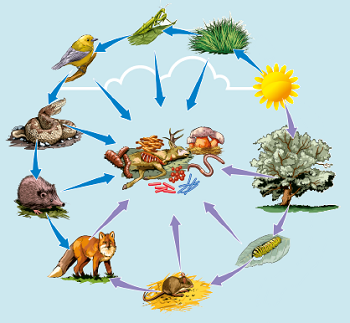Habitat Interaction
The food chain is a community of living organisms interacting with one another. One very important aspect of the food chain is the energy that flows through it. The food chain effectively illustrates the amounts of energy that are absorbed by the different types of organisms in an ecosystem. With photosynthesis complete and food and energy absorbed, the plants produce their own food and they release the oxygen. That’s why plants are called ‘producers’ in the food chain.
Herbivores are animals that eat mostly plant life. Termites, koalas, field mice, and deer are a few examples of herbivores. Deer feed on leaves and grass, consuming the green plant life’s energy. The herbivores of the food chain are called “primary consumers.” Energy is transferred again in the food chain’s energy flow from primary consumers to “secondary consumers.” Carnivores, or meat-eaters, act as secondary consumers. Lions, tigers, and polar bears are carnivorous. They eat the meat of the herbivores after a hunt. Unfortunately for the carnivorous secondary consumers, they too will eventually find themselves targeted for their energy by other members of the food chain; the tertiary consumers.
Secondary consumers are carnivorous predators, meaning that they hunt down other animals and kill them for food. However, these animals are not at the very top of the food chain and they too can be hunted. Tertiary consumers are predators who lie at the top of the food chain. Human beings are the most obvious example of a tertiary consumer. Unlike the secondary consumers, tertiary consumers are not normally preyed upon by other members of the food chain.

